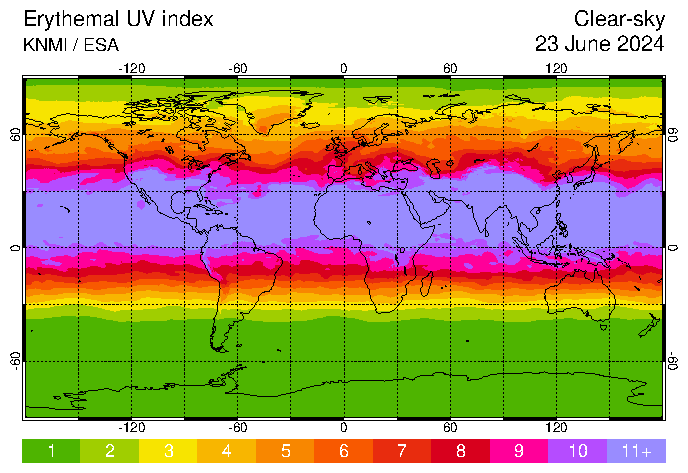🌈 Reasonable Colors; 🐔 RoosterJS; ☀️ UV 🕶️
A bit of something for everyone in the weekend Bonus Drop. Whether it be a fresh new semantic color palette, yet-another-browser-editor framework, or how to see just how borked we all are with our new global weirding.
🌈 Reasonable Colors

Reasonable Colors (GL) is a free and open-source color system designed to create accessible, high-contrast color combinations. The system is built to meet WCAG 2 contrast recommendations, and each color comes in six numbered shades. The contrast between shades can also be easily determined by their numeric difference.
The (combined) twenty-four sets of named colors are uniformly spaced on the LCH color wheel, making it pretty straightforward to find complementary pairs and build attractive color palettes. This also lets us mix and match shades from any color, including grays.
The CSS variables are defined in the format --color-COLORNAME-SHADE and can be easily included via a CSS file or installed through NPM (or other registries).
While the defaults use hex values, HSL, RGB, and LCH CSS variables are also available, and everything is available as MIT licensed FOSS.
🐔 RoosterJS

If you think you’re going to need a rich, editable text box in your next project, and you’re looking for an alternative to Ace or Monaco, perhaps take a gander at RoosterJS (and, ignore that it comes from one of the most evil companies to ever have existed). It’s super lightweight, very flexible and framework-independent (so, you’re not locked into the gosh awful React).
The project is built on a modular architecture. The editor centers around a core content model, with additional packages for APIs, DOM operations, and plugins. This clever design lets us include only the functionality we need (which reduced dependency Hades, and can shrink the overall deployment fairly handily).
Setting up a basic instance requires very minimal code, with a straightforward API for common operations like toggling bold, italic, and underline text.
While Monaco and Ace are fine editors with extensive language support, RoosterJS focuses on providing a solid foundation for one thing: rich text editing. This specialization makes it an excellent choice for projects that don’t require advanced code editing features but need robust text formatting capabilities.
☀️ UV 🕶️

Large portions of our globe are not just baking, but they’re also frying. At least that’s how I refer to extreme UV index conditions. But, before we get to the resource(s), we should talk a bit about the UV Index.
The UV Index was invented by three Canadian scientists — James B. Kerr, C. Thomas McElroy, and David I. Wardle — in Ontario around 1992. Their goal was to create a tool that could help protect Canadians from overexposure to the sun’s ultraviolet (UV) radiation. In May of that same year, Environment Canada launched the UV Index as part of their weather forecast, making Canada the first country in the world to issue official predictions of UV levels for the next day. Following Canada’s lead, many other countries began developing their own UV indices.
Initially, there were (many) inconsistencies in how different countries calculated and reported their UV indices. To address this, the World Health Organization (WHO) and World Meteorological Organization standardized a global UV index in 1994 (direct PDF). This standardization adopted the Canadian definition for calculations and specified uniform colors and graphics for visual media. In 2005, Australia and the United States launched the UV Alert system to raise awareness about the dangers of over-exposure to intense UV radiation.
Those inventors of the UV Index were honored by the United Nations in 2007 with the Innovators Award for their significant work on reducing public health risks from UV radiation.
More recently, in 2022, the World Health Organization (WHO), World Meteorological Organization (WMO), United Nations Environment Programme (UNEP), and International Labour Organization (ILO) jointly launched a mobile phone application to provide localized information on UV radiation levels. This development demonstrates the continued relevance and evolution of the UV Index as a public health tool.
While you can 100% use that app, there are many sources — like this and this (plus many more with a Kagi, etc. search) which can help you keep an eye on the UV index where you are.
I mention this, as parts of the U.S. that should never get to 11+ UV did so this past weekend. Those levels are extremely unsafe at almost any level of exposure.
Please keep safe as we head through a season of heat domes, massive UV Index events, and other forms of extreme and “weird” weather.
FIN
Remember, you can follow and interact with the full text of The Daily Drop’s free posts on Mastodon via @dailydrop.hrbrmstr.dev@dailydrop.hrbrmstr.dev ☮️
Leave a comment